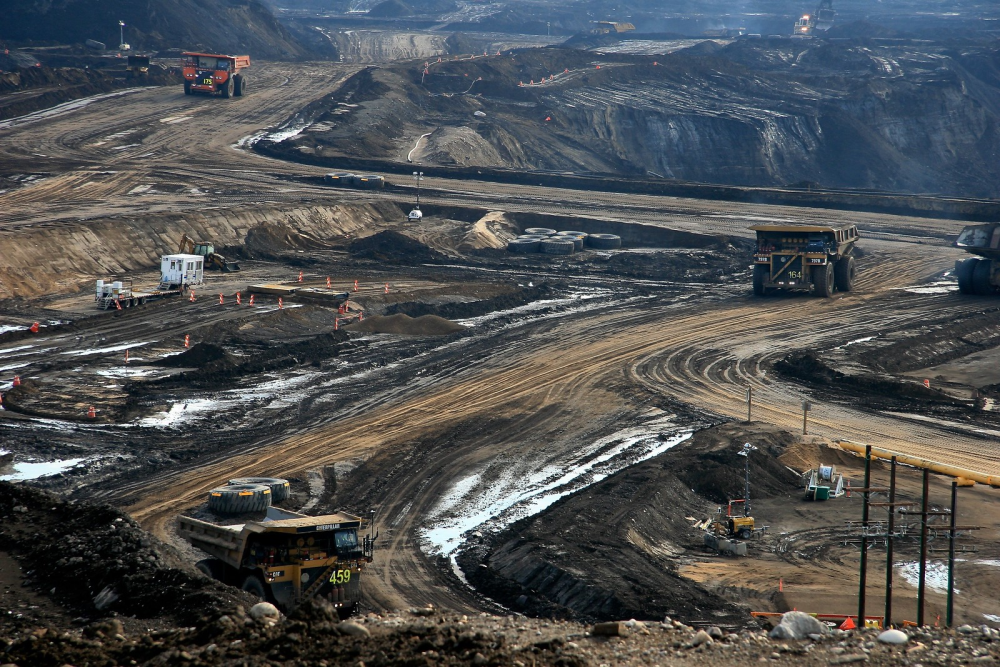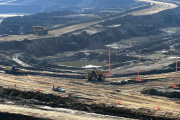But in the longer term, Europe’s response to events in Ukraine has been to stick to decarbonization efforts and accelerate investment in renewables. For example, it is committed to its Fit for 55 plan to reduce natural gas use 30 per cent by 2030 and is considering accelerating investment in wind and solar power in the next few years to reduce dependence on Russian fossil fuels. Plans to institute a Border Carbon Adjustment Mechanism — which will impose new taxes on imports from countries that are less ambitious than the EU on climate — forge ahead.
When it comes to energy policy, the news cycle right now can be confusing. In the course of a few weeks in March and April, there were a series of what felt like conflicting announcements.
In late March, Ottawa released its Emissions Reduction Plan, which included a trajectory to drive down emissions generated by oil and gas production in Canada. A week later, the IPCC released its latest report on the deepening climate emergency, imploring countries to rapidly and substantially reduce their use of fossil fuels.
Meanwhile — also in March — Natural Resources Minister Jonathan Wilkinson announced that Canada could increase oil and gas exports this year by up to 300,000 barrels per day to help buttress the global supply amidst Russian aggression in Ukraine. Shortly afterwards, the federal government approved a new offshore oil project in Newfoundland and Labrador.
How do we make sense of these developments when they seem to undercut each other on such a regular basis?
A good way of thinking about it is to consider medium- and long-term needs versus short-term demands.
Long-term climate action not at odds with energy security
The Russian invasion of Ukraine has prompted the world to search for secure and immediately available energy supplies. In the short term, if European countries are to apply deeper sanctions on Russia and ultimately stop buying its product, they need to find new suppliers of oil and gas — which is why EU leaders continue to pressure the OPEC nations to increase production.
Put simply: the answer to the energy security question can look very different if you take an immediate or longer-term view. The key is to make sure the solutions we choose to meet our short-term needs do not jeopardize our longer-term climate imperatives. In the face of a climate emergency, our approach to energy security today must be consistent with a responsible approach to climate change and the need to reduce our carbon emissions.
Change has begun
Despite the volatility of global oil markets in the last few months, the current pace at which governments are introducing climate policies — and associated changes to the way we produce and consume energy — is not far off from the International Energy Agency’s Announced Pledges Scenario,which forecasts a plateau and decline in demand for oil in this decade. Oil majors BP and Equinor forecast a peak in oil demand before 2030, even without more ambitious climate action.
Take sales of electric vehicles for example, which increased globally and in Canada during the pandemic and continue to outpace International Energy Agency projections of what is needed to reach a net-zero transportation sector by 2050.
As consumers continue to make the switch to EVs, their need for oil will further decrease (and will be replaced by increased demand for electricity, which is why the Pembina Institute is working with the federal government on moving Canada’s grid to net-zero). According to data from the International Energy Agency, EVs represented just over two per cent of vehicle sales globally in 2019; by the end of 2021, market share had risen to nine per cent. Early figures from 2022 indicate that this trend continues, despite supply chain challenges.

Figure 1: Global market share of EVs over time
In light of this pace of change, it is important to consider what federal policies, such as the carbon price, are designed to do. Earlier this month, Alberta Environment Minister Jason Nixon wrote about the federal government’s Emissions Reduction Plan, which he wrongly asserted included policies to cut production in the oil and gas sector that would “destroy Alberta’s economy.” Rather, policies aimed at decarbonization will shield the economy from global economic and political trends that are already having and will continue to have, significant impacts on Canadian industry.
For example, the most effective solutions to Europe’s energy security needs right now are projects that can scale up quickly to fill the supply vacuum, but can also pay back capital costs quickly (and therefore don’t lock investors into long-term, emissions-intensive fossil fuel projects that are at odds with decarbonization policies). Most sources of Canadian oil do not fit the bill; oilsands and offshore projects, as well as pipelines and export terminals, take time to scale up and must operate for decades to provide good investment returns. The likelihood of these assets becoming stranded (when they can’t adhere to changing climate policies during their decades in operation) increases the longer we delay deep decarbonization strategies. The Bank of Canada notes that clear, stable and ambitious climate policy is the best way to mitigate these financial risks.
Invest now or pay later
There are costs, both economic and social, associated with reforming global energy systems. Canada’s Emissions Reduction Plan pledges "new investments" of about $9 billion to stimulate innovative climate solutions, which is a start (though not nearly enough) to get to net-zero. But the cost of doing nothing — of failing to mitigate climate change below the international 1.5 C target — is far higher. Estimates put the price of not meeting Paris Agreement targets between US$149 trillion and $792 trillion globally by 2100. And the bills are piling up now: the Canadian Climate Institute estimates that costs related to weather disasters have risen by 1,250 per cent since the 1980s.
Nobody said the move to cleaner sources of energy would be straightforward, and the confusion of the last few weeks reflects the moment we are in. As we struggle to balance long-term climate needs with immediate shocks to our economy, we must keep our eyes on 2030 and 2050 and recognize that the consumers of oil have even more reasons now to eliminate its use.
In the years ahead, true energy, economic and climate security will come from increasing our share of renewable energies and decarbonizing our industrial processes to the greatest extent possible.







